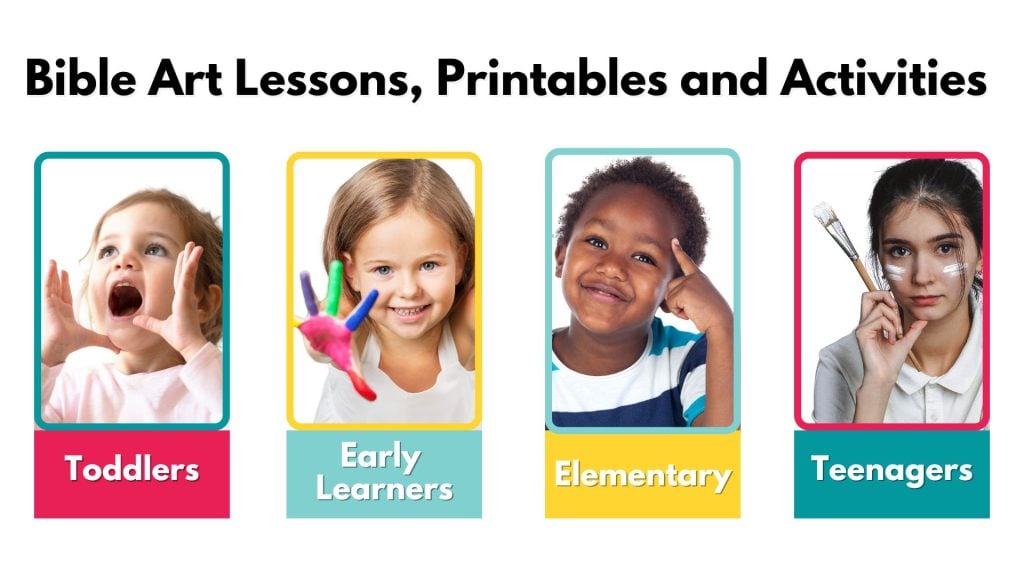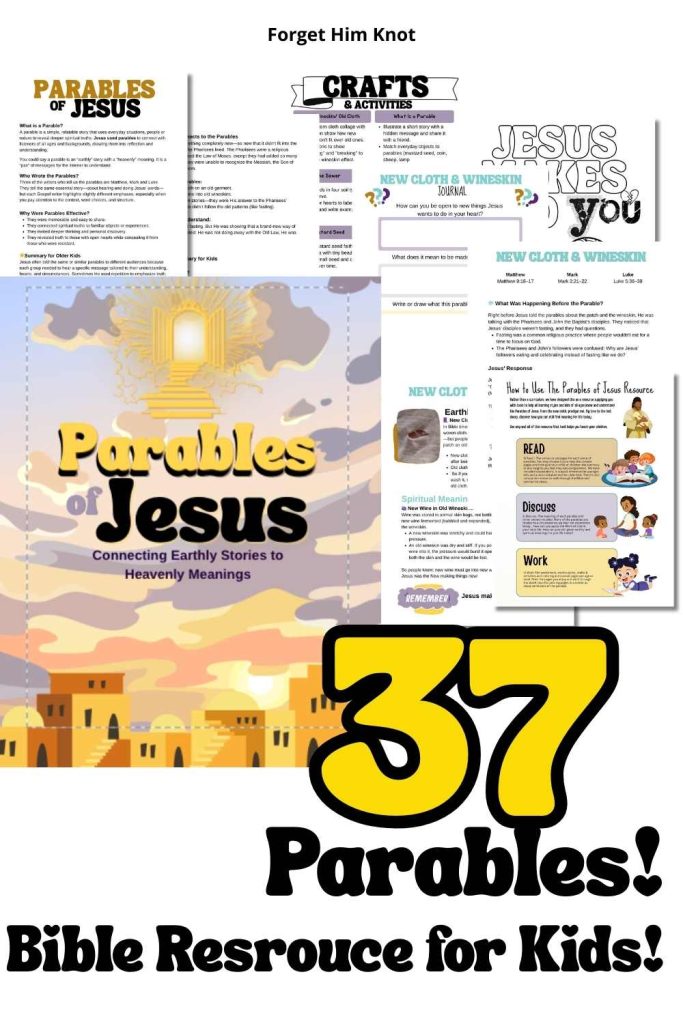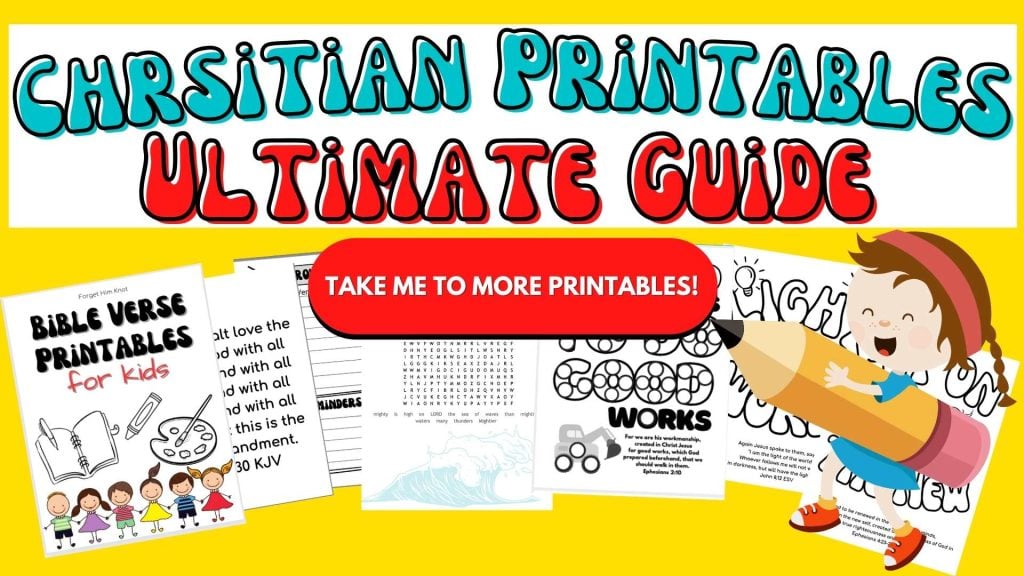
The Parables of Jesus for Kids
In the New Testament, more specifically the Gospels, you will find amazing stories Jesus told that even kids can understand, known as the parables,
A parable is a simple, relatable story that uses everyday situations, people or nature to reveal deeper spiritual truths. Jesus used parables to connect with listeners of all ages and backgrounds, drawing them into thinking beyond their immediate situation and gaining a deeper understanding.
You could say a parable is an “earthly” story with a “heavenly” meaning. It is a “pair” of messages for the listener to understand.
If you’ve ever tried to explain a concept to a child, you’ve most likely told a story or given an example to get them to understand the importance.
Then you probably had to re-explain your story in simple wording because they didn’t understand it the first time.
Jesus understood His audience’s needs. Parables were the Lord’s way of getting through the thick skulls of His people. We can be rather hard-headed humans!
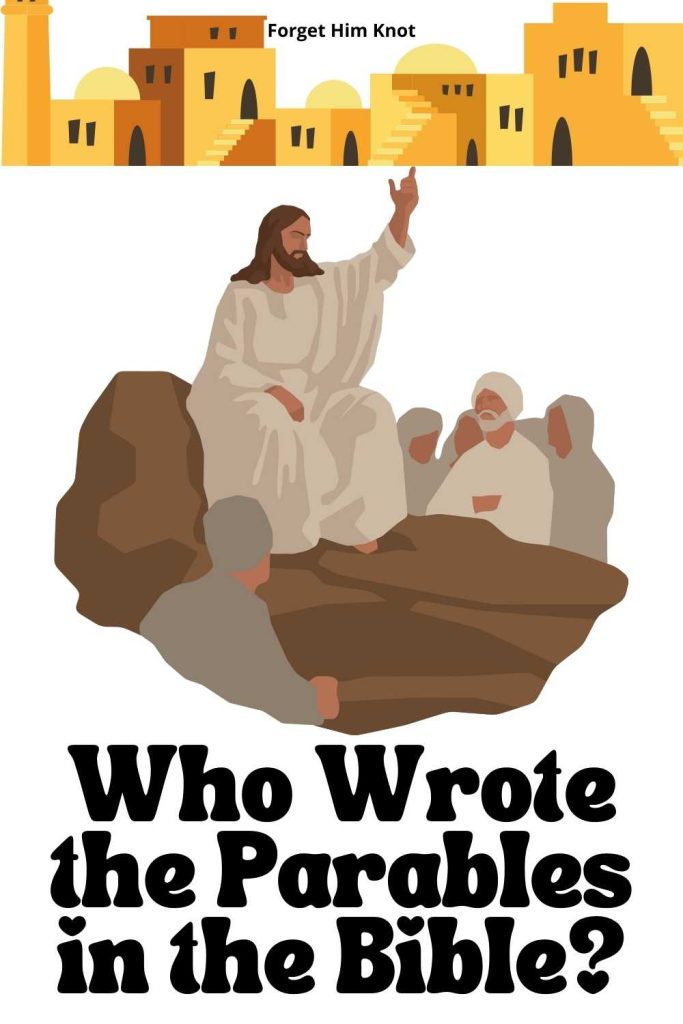
Who Wrote the Parables?
The three writers of the Bible who tell us the parables are Matthew, Mark and Luke. They give the same essential story—about hearing and doing Jesus’ words—but each Gospel writer highlights slightly different emphases, especially when you pay attention to the context, word choices, and structure.
Matthew, a Levi, was a tax collector. He was detail-oriented and organized. He grouped Jesus’ teachings thematically. As the author of the book of Matthew:
- Wrote to a Jewish audience; emphasizes Jesus as the promised Messiah and King, and included many Old Testament prophecies.
- Jesus sees value in everyone!
Mark was not one of the original twelve apostles but he was an important early Christian evangelist and companion of Peter and Paul. He is the author of the book of Mark.
- His gospel emphasizes Jesus’ actions and miracles, written for a Roman audience.
- Shows the importance of partnership and forgiveness in ministry.
- His gospel is the shortest and earliest written.
Luke, was the only non-Jewish New-Testament writer. He is the author of the Gospel of Luke & Acts, while also being a traveling physician and loyal friend of Paul. He is a careful historian – interviews eyewitnesses; writes an “orderly account” for Theophilus.
- Matthew often emphasized Jesus as the promised King and included parables about the Kingdom of Heaven.
- Luke focused on Jesus’ compassion and love for the lost, highlighting parables like the Prodigal Son and Good Samaritan.
- Mark, being the shortest gospel, shared fewer parables but focused on the authority and action of Jesus.
These differences show how the Holy Spirit used each writer’s perspective and audience to give us a fuller, richer understanding of Jesus’ teachings.
Some of the parables seem like the same story, but have a different emphasis or the details are not recorded he same. Rather than contradicting, the multiple viewpoints help us see how Jesus understood his audience and the message they needed to hear.
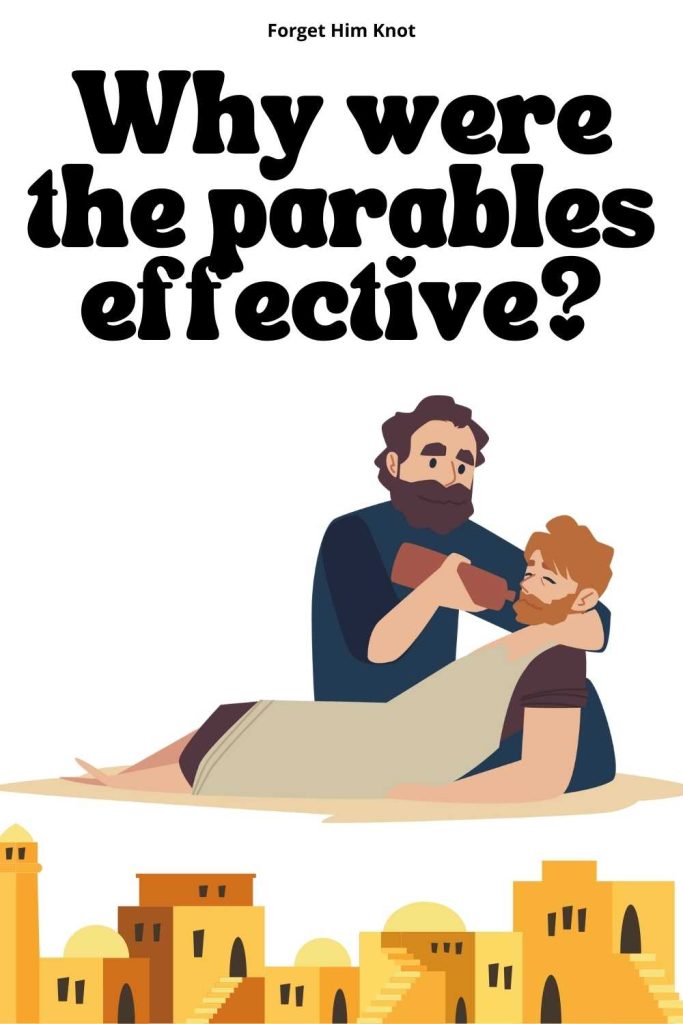
Why Were the Parables Effective?
Why Were Parables Effective?
- They were memorable and easy to share.
- They connected spiritual truths to familiar objects or experiences.
- They invited deeper thinking and personal discovery.
- They revealed truth to those with open hearts while concealing it from those who were resistant.
Sometimes He used repetition to emphasize truth, knowing that not everyone would grasp it the first time. By sharing a parable in one setting with the crowd, and another time with His disciples, He revealed both surface-level “earthly” and deeper spiritual “heavenly” meanings.
For example, a story like the parable of the talents/minas was told in slightly different ways to highlight different truths: responsibility, reward, and the character of the Master.
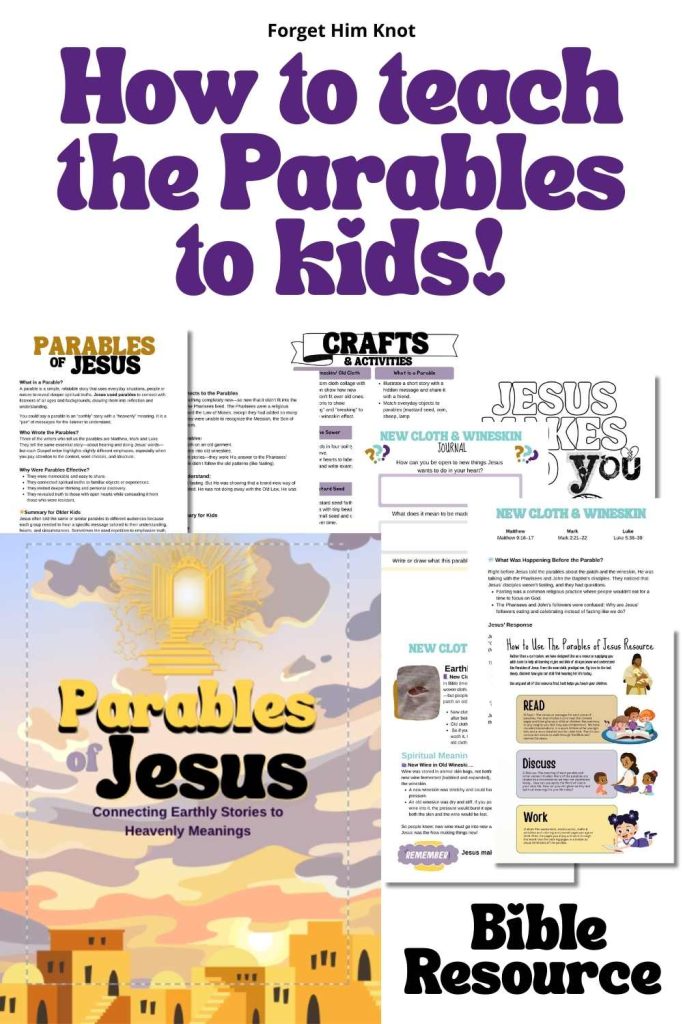
How to Explain The Parables of Jesus to Kids

Jesus often told the same or similar parables to different audiences because each group needed to hear a specific message tailored to their understanding, hearts, and circumstances. Sometimes He used repetition to emphasize truth, knowing that not everyone would grasp it the first time.
By sharing a parable in one setting with the crowd, and another time with His disciples, He revealed both earthly and deeper spiritual meanings at the same time.
He made the story applicable to a person’s daily life. The same way you probably connect and relate Bible truths to any given situation throughout the day with your children.
The best way to explain the parables to kids is through Bible reading, discussion, and activities to engage their learning styles and enrich their study.
Our Parables of Jesus for Kids contains printables, coloring pages, crafts, activities, journaling, questions, explanations and cultural insights to help you easily explain parables to kids.
It is currently only available in our Bible Art Membership.
